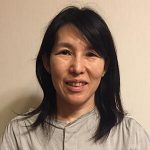By Ritsuko Nakajima
Overview of academic journals published in Japan
In Japan, scholarly journals are mainly published by academic societies, which presents an entirely different picture from the west where many journals are published by commercial publishers. The number of academic associations is more than 2,000 counting only those that have registered as a cooperative body by the Science Council of Japan and they also have various characters such as large societies with tens of thousands of members, historical ones founded in the 19th century, young and new ones, etc. Especially, small to medium-sized societies occupy a large number and are often not blessed with the financial base and human resources necessary for journal publishing.
J-STAGE (Japan Science and Technology Information Aggregator, Electronic) – a service operated by Japan Science and Technology Agency (JST), a national agency – provides such diverse academic societies with journal publishing functions. In the 1990s, digitization of journals progressed rapidly over the world, but it began a little later for Japanese journals and J-STAGE was launched in 1999. Initially, it had about 30 journals, and now it has grown to 2,700. Of those, about 1,500 journals are updated regularly, about 270 are published in English, and the remaining ones, more than 1,200, are Japanese or Japanese/English journals. The research activities seem to be brisk and lively but involve many challenges.
Although journals published by Japanese academic societies have struggled to show international competitiveness since before the 1990s, they have not achieved a huge success compared to the presence that the Japanese scientific research has shown. Much of the excellent research output from Japan has been submitted to journals published in English-speaking countries. It was even shown that 80% of papers by Japanese researchers were published in overseas journals. Consequently, many Japanese journals are aiming to become the second and subsequent choices for paper submission destination or a different type of journal, rather than publishing international and state-of-the-art research, so that they are not conscious of internationality. For example, journals in fields closely related to the domestic industry where researchers do not use English regularly, in fields where Japan has the academic superiority such as Japanese studies, or journals aiming for the education of students who write papers for the first time. The fact that many publications are issued, and researches are performed using them are believed to be contributing to enhancing Japanese scientific research, however, it has also pointed out that subdivided small-sized journals have disadvantages and should form a coalition or integrate in order to take advantage of scale. On the other hand, many of the journals published by academic societies aiming to have global competitiveness are hosted by international publishers. In order to respond to such a difficult situation, the future direction of J-STAGE has been discussed in recent years.
Responses of publishers to open access movement – Case of some journals on J-STAGE
As for the management model of such a large number of diverse journals, in most cases, most of the income owes to the membership fee paid by society members and the cost of journal publishing depends on the submission fee and subscription fee in addition to the membership fee. Journals in print media have been usually distributed only to members who pay membership fees, but when they began publishing electronic versions in parallel with the print, often the electronic version was only made free of charge in order to improve visibility with intending to make the journal more widely read. Currently, more than 80% of journals on J-STAGE are freely accessible. We should be proud of such a high “Open Access” rate because they fill the basic requirement of open access that is free and unrestricted online availability. Nevertheless, only a small number of journals claim to be open access, therefore few journals specify OA licenses. Although a free access journal that does not specify an open license is sometimes called bronze OA, if a Japanese journal is freely accessible without specifying an open license, presumably the publisher does not think of the journal as an OA journal.
That said, some journals are seriously considering becoming OA. While we were working with the societies, several barriers to becoming an OA journal such as the following came to light. In the beginning, there was an idea that it would be relatively easy to become an OA journal if it were a free journal already, and it would be achieved only by clarifying rules and preparing documents for authors/readers to make the management process transparent, but that was actually not true. Considering the principle of OA, we thought that it was possible to separate open accessibility and the journals’ business model. However, as a matter of fact, people consider that an OA journal is accompanied by the Article Processing Charge (APC) system, which shows the financial stability and eventually leads to the reliability and sustainability of the journal. In that context, we understand that considering the business model including the APC system is indispensable when considering becoming OA journal, so if the financial situation suffers you may expect APC would stabilize its operation, but there is also a risk of lowering incentives for submitting articles. In considering whether to become OA journal or not, there are cases where APC introduction availability is the point.
Meanwhile, for academic societies that do not have imminent financial problems due to income sources other than membership fees, it is only necessary to continue the existing business model, for the time being. There is no motivation for introducing APC. In fact, there are opinions that the members would lose their merit. Specifying OA license is also recommended from the aspect of promoting the reuse of research results, however, this condition discourages certain journals due to concerns about misuse of research output or losing income deriving from copyright. Finally, there are opinions that being called OA journal itself is not preferable; OA journals have earned a bad reputation among researchers on certain fields, so journals that have operated on the peer-review system seriously for a long time want to avoid to be seen as OA journals which conduct “light” peer review or even as predatory journals. Although DOAJ lists reliable OA journals, it has not been an indicator widely spread to researchers yet compared to other indicators based on citations counts such as JIF (Journal Impact Factor). It seems that more discussion within the academic society is needed before transitioning to OA.
However, even under such circumstances, there are journals that had already transitioned to OA, although the number is not so large. In those cases, there often seems to be a researcher on the board who had knowledge and perspectives on OA and functioned as a leader. Moreover, when the original form of operation was close to that of OA journal, for example, their submission fees were comparatively expensive and could be simply converted to APC, or OA was common in the journal’s field so there was no discomfort to researchers, so transitioning to OA journal shouldn’t have been a big change. Meanwhile, there are societies that foresee OA journals will be dominant in the future and are preparing to publish a new OA journal separately from their existing flagship journals.
I have described the responses of academic societies whose journals are published on J-STAGE based on our experience obtained through conversations with the societies. We are under the impression that the situation is yet premature, and societies are at a state of “wait and see”. Considering the fact that many of the internationally competitive journals remain as subscription journals, Japanese academic journals will take time to deepen understanding and discussion on the future management. It is unlikely that the transition to OA will take place rapidly. The discussion should progress while taking into account keeping the merits of academic members, increasing the value to attract high-quality articles from overseas (high quality of the journal as well as meeting international standards) and maintaining the sustainable management ability in terms of finance and quality. In order to promote discussions at academic societies necessary for considering OA transition, supporting by providing information on the worldly situation in scholarly publishing is necessary.
References
Cooperation with science and research bodies [online]. Science Council of Japan [viewed 31 August 2018]. Available from: http://www.scj.go.jp/en/dom/index.html
NEGISHI, M. A Quantitative Analysis on “Overseas Drain Ratios” of Japanese Papers and the “Internationalization” of Academic Societies: Their Implications and the Rate of Self-Sufficiency in Scientific Research. Joho Chishiki Gakkaishi [online]. 2011, vol. 21, no. 2, pp. 197–204, ISSN: 0917-1436 [viewed 31 August 2018]. DOI: 10.2964/jsik.21_12. Available from: https://www.jstage.jst.go.jp/article/jsik/21/2/21_21_12/_article/-char/ja/
PIWOWAR, H., et al.The state of OA: a large-scale analysis of the prevalence and impact of Open Access articles. PeerJ [online]. 2018, vol. 6, e4375 [viewed 31 August 2018]. DOI: 10.7717/peerj.4375. Available from: https://peerj.com/articles/4375/
SCIENCE COUNCIL OF JAPAN. Proposal: Towards solution to the serials crisis. Science Council of Japan. 2010 [viewed 31 August 2018]. Available from: http://www.scj.go.jp/ja/info/kohyo/pdf/kohyo-21-t101-1.pdf
SCIENCE COUNCIL OF JAPAN. Report: For improving the functioning of academic societies [online]. Science Council of Japan. 2007 [viewed 31 August 2018]. Available from: http://www.scj.go.jp/ja/info/kohyo/pdf/kohyo-20-t39-g.pdf
External link
J-STAGE <https://www.jstage.jst.go.jp/browse/-char/en/>
About Ritsuko Nakajima
Ritsuko Nakajima is Manager of Human Resource Information in the Department of Databases for Information Knowledge Infrastructure at Japan Science and Technology Agency(JST), where she is responsible for running the Japanese researcher database service researchmap as well as the job information service for researchers JREC-IN Porta. She has been involved in a number of projects related to information services, including the Japanese journal aggregator J-STAGE and the DOI registration Agency Japan Link Center. Ritsuko is also taking care of promotion of open access for articles as research output derived from researches funded by JST.
Como citar este post [ISO 690/2010]:

















Recent Comments